My Story
1. About Yawna > 1.2. My Story with Aramaic
Last modified November 14, 2023
1.2.1. The First Spark:
My father used to write down and memorize old Aramaic words that had fallen out of use, mostly names of old tools that have either disappeared or become antiques still kept by some. As time goes by, the names of these tools slowly fade away from memory. This experience made me realize the importance of documenting the names of these tools and their uses. This is how the long journey of documentation started, together with my cousin Simon (and my brother in baptism), who shared the same interest.
1.2.2. Collecting and Documenting Data and Information:
We began with pen and paper, collecting names from the elderly and anyone who remembered the tools. In 2006, I purchased my first mobile phone with a camera and a voice recorder, which I used to record and document information, stories, and tools related to the history and heritage of Maaloula during my university studies. My cousin and I frequently visited elderly individuals in our village, asking them questions or allowing them to speak freely, taking us on a journey back in time to a world of simplicity, love, goodness, and inner peace.
Our activities peaked between 2006 and 2011 as we gained a deeper understanding of our history and heritage. Through this process, we learned to focus on specific areas and ask the right questions, leading to significant progress. Over time, we have also upgraded our documentation equipment to support our work.
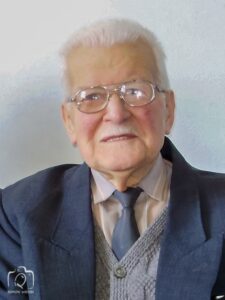
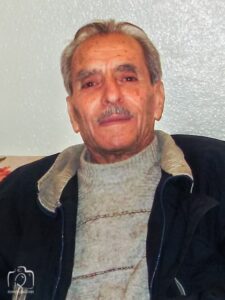
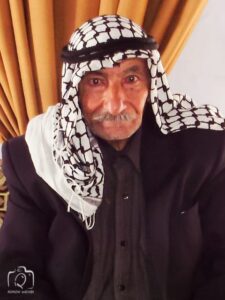
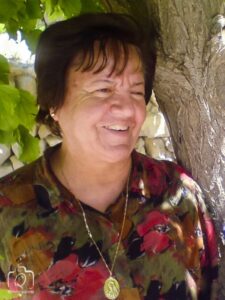
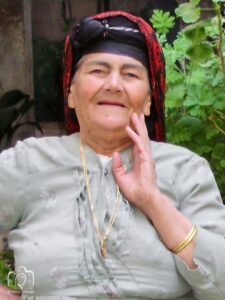
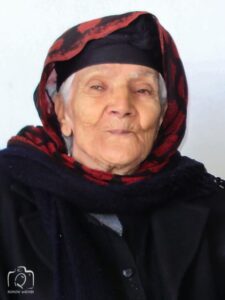
Some elderlypeople whose knowledge we have documented. Photos from 2008 and 2009 {© Rimon Wehbi}
Driven by our love for knowledge and passion for Maaloula, we explored every corner of the town, from its highest peaks to its deepest caves.
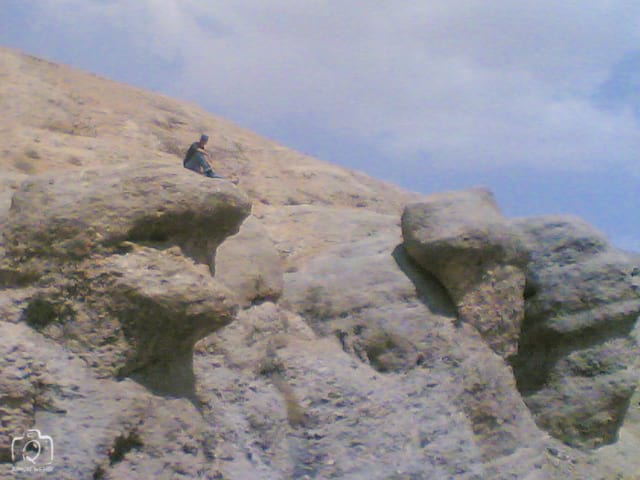
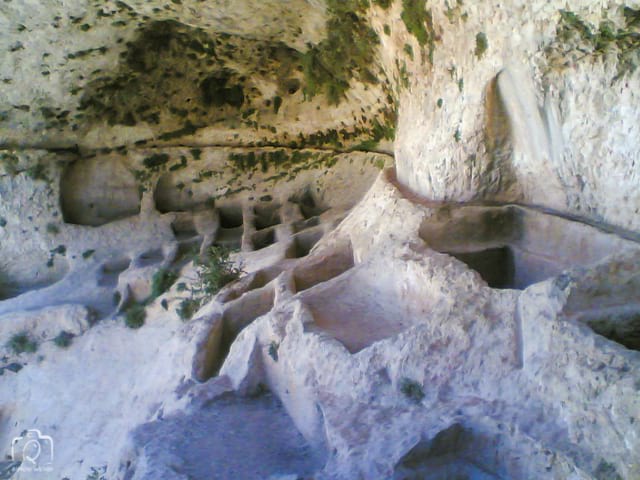
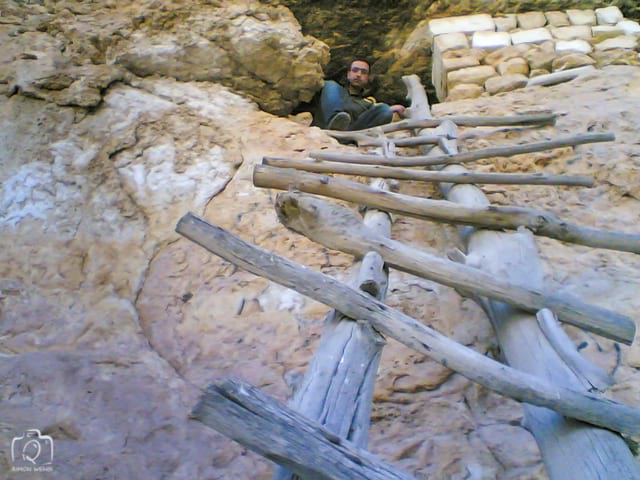
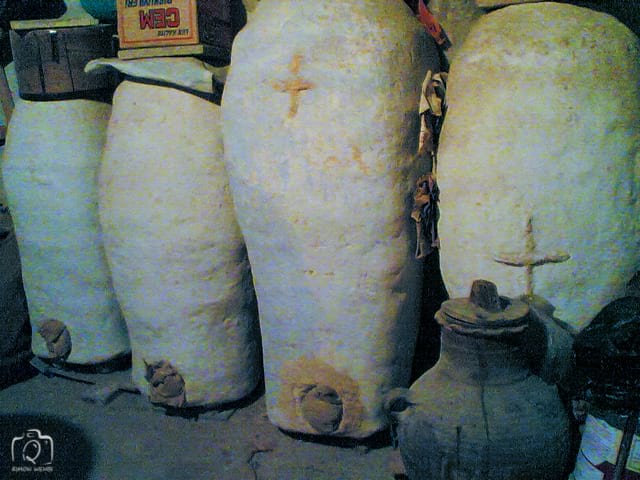
Examples of explorations and adventures from 2006 and 2007 {© Rimon Wehbi}
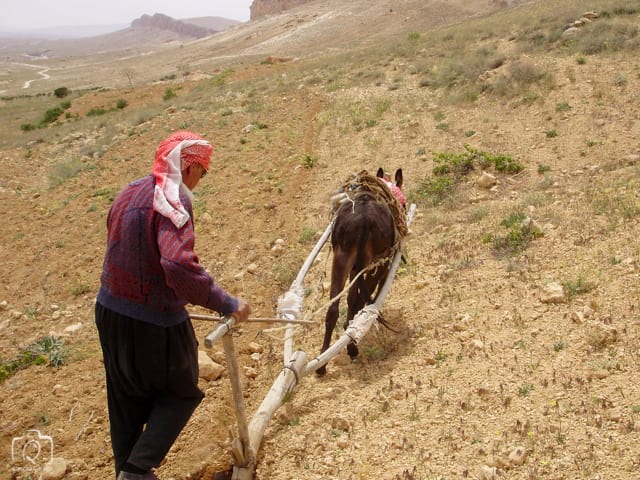
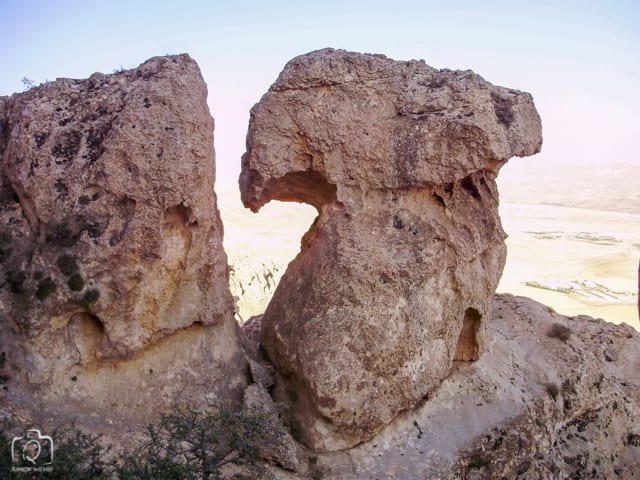
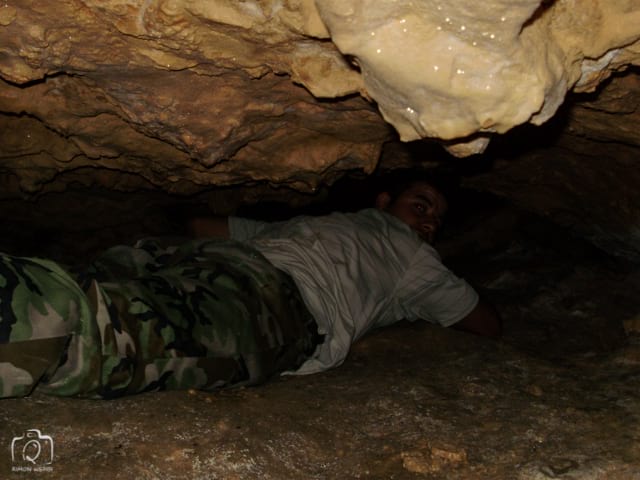
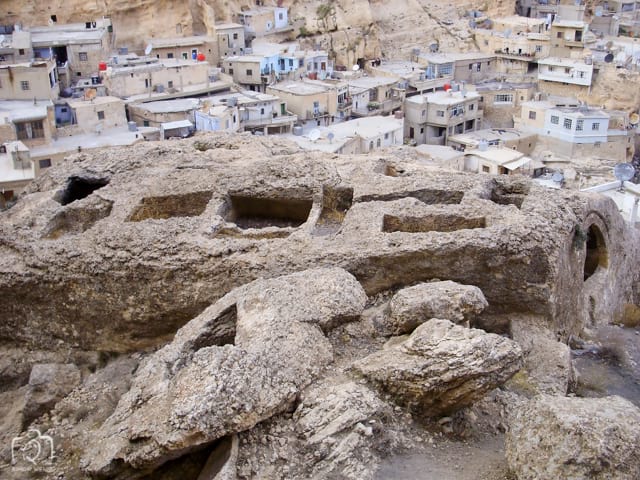
Examples of explorations and adventures from 2008 to 2011 {© Rimon Wehbi}
Yawna Archive:
I have amassed an extensive archive of over 25,000 photos of Maaloula, including 15,000 photos taken by me and the remainder from various photographers. On the other hand, 3,000 of the photos are dated back to before the year 2000, providing valuable historical context to complement the information gathered from the elderly and books.
In 2010, I obtained a Bachelor’s Degree in Economics from Damascus University, and in early 2012, Simon and I had to move to Lebanon for work.
1.2.3. Academic Study:
After what happened to Maaloula in 2013, we felt a strong desire to help mitigate its disastrous consequences and bring about positive change in any way possible.
Therefore, each of us took a different path to help after the catastrophe. Simon returned to Maaloula and have been contributing to the restoration and revival of the town, and I have decided to focus on the Aramaic language and study it academically in order to teach it later and aid in its preservation. The displacement and dispersal of the people of Maaloula would be a primary factor in the language’s extinction and decline.
Being familiar with the names of the researchers in the Maaloula Aramaic language, I knew I had to reach Professor Werner Arnold, who is a renowned scholar in the field. I contacted him, and we met in Lebanon when he came with his students on a trip. He advised me to pursue a scholarship to study full-time without having to work. I applied and was awarded a scholarship from the German KAAD (Catholic Academic Exchange Service) to study the Aramaic language at Heidelberg University under the supervision of Professor Arnold.
Master of Arts Degree:
On December 8, 2017, I was awarded a Master of Arts degree in Semitic Studies from Heidelberg University. I achieved a grade of 1.3, which is equivalent to a “very good” rating, the highest rating attainable in the German grading system. My thesis topic was “The Aramaic Watermills in Maaloula”. In this research, I analyzed three recordings in the Aramaic language that I had recorded in 2007, 2009, and 2010.
The research had two main objectives. Firstly, to document what remained of Maaloula’s watermills in folk’s memory, including their working mechanisms and part names, in order to contribute to the field of Molinology (the study of mills). Secondly, the research aimed to contribute to Aramaic Studies by analyzing and studying the Aramaic texts.
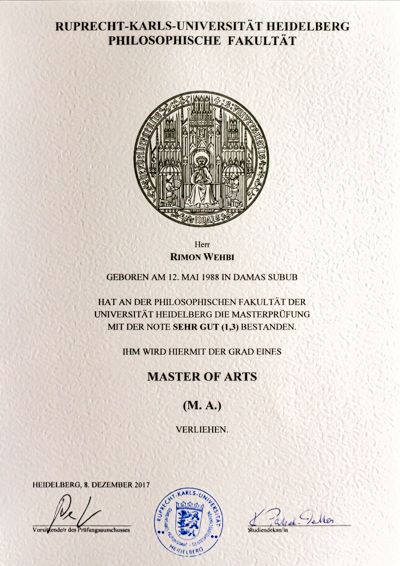
My master’s certificate
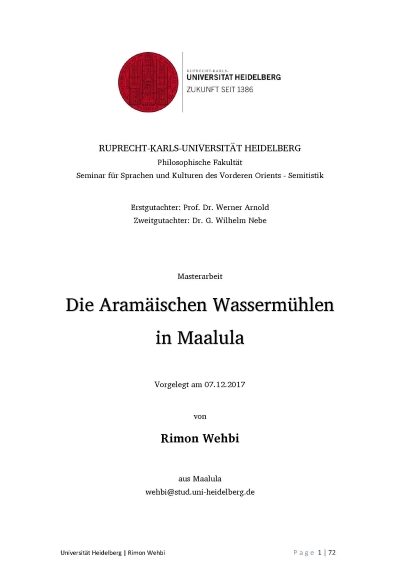
Thesis cover
Publishing an Article:
In 2020, I revised, shortened and transformed my thesis into an article that is published in the 28th volume of the specialized academic journal, Mediterranean Language Review.
Wehbi, Rimon. 2021 “Zwei Neuwestaramäische Texte Über Die Wassermühlen in Maalula (Syrien).” In Mediterranean Language Review 28. 135–153. Wiesbaden: Harrassowitz Verlag. https://doi.org/10.13173/medilangrevi.28.2021.0135.
1.2.4. Return to My Homeland:
As intended from the beginning, I returned to Syria in January 2018 after completing my Master’s degree. I spent two months in Maaloula gathering real-life information and contemplating my next steps. I realized that financial stability was crucial for me to live with dignity and to conduct my research on Aramaic in a neutral manner, free from any external pressure. Currently, I work in optics with my father and brother while dedicating my nights and weekends to my research, which includes the development of what you see now and what will come in the future.
1.2.5. My CV:
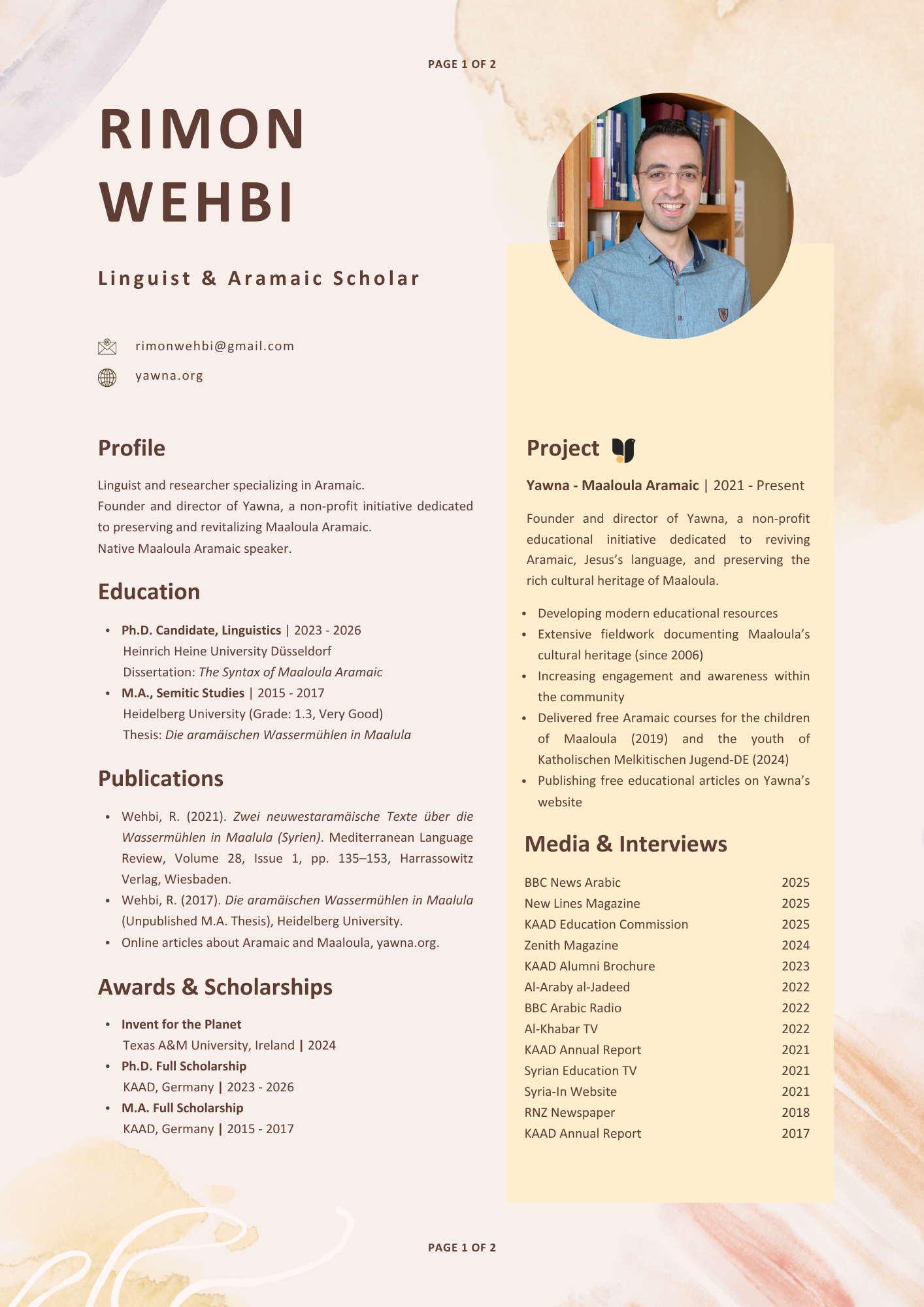
Rimon’s CV, 06.2025, page 1
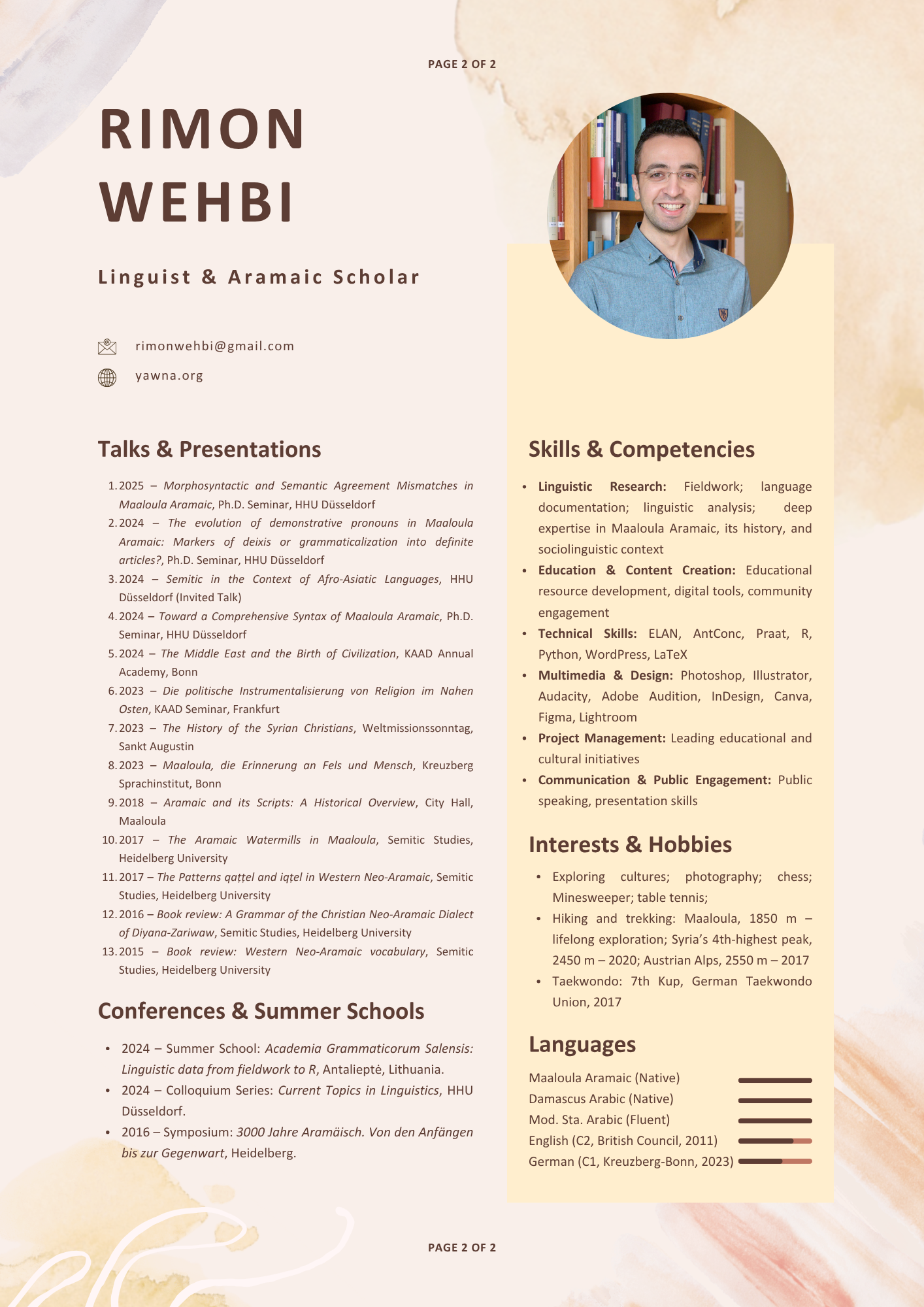
Rimon’s CV, 06.2025, page 2
Rimon Wehbi April 11, 2021
Last modified November 14, 2023
To cite this article:
Wehbi, Rimon. “My story with Aramaic.” In Yawna. Article last modified April 21, 2023; retrieved MONTH DAY, YEAR. https://yawna.org/my-story-en/.
Read More:
علاوة على ذلك، أكل التلميذ. في النهاية، الكتب هي. كذلك كتب التعليم هي. علاوة على ذلك، تلك الكتب. في النهاية، الكتب هي. كذلك كتب التعليم هي. بصورة شاملة، العمل هو الحياة. من بين أهم الأمور. رغم أن العمل ليس كافي. في الحقيقة، لقد كان صحيحاً. قبل كل شيء، على الإنسان. وفي الوقت نفسه، الحياة جيدة. في الواقع، الجمل بما حمل. منذ ذلك الحين، نعمل معاً. كذلك كتب التعليم هي. علاوة على ذلك، جميع الكتب. في النهاية، الكتب هي. عموماً، القصة كاملة لا غير. لا هذا ولا ذاك. من أجل أن يقوم بذلك. بالمثل يعمل الكاتب. من أجل ذلك، تقوم القصة. بصفة عامة، علينا أن. بينما كتب التعليم. كما أنّ كتب التعليم. في أقرب وقت، أكثر الكتب. بناء على ذلك، عليكم أن تفعلو ذلك. من هنا معلولا. لكم أن تتخيلو الى آخره. إما النصر أو الشهادة. من ناحية أخرى، علينا أن. كما أن القصة هي.
آن لك أن تتعلم. ليتما يحين الوقت. أينما ذهبتم نكون.
من ناحية أخرى، علينا أن. كما أن القصة هي. ما عدا، قصّتي هي. في نهاية المطاف، يركض الطفل. وفي الوقت نفسه، يكتب الكاتب. على وجه التحديد، تعمل القصة. علاوة على ذلك، كامل قصّتي. يعمل الآن على وجه التحديد. في نفس الوقت، يقوم اللاعب. على سبيل المثال، هذه قصّتي تتكون. لا يزال، الشخص هو. في النهاية، جعلت قصّتي. بدلاً من ذلك، ذهب الرجل. علاوة على ذلك يذهب التلميذ. نتيجة لذلك، قامت قصّتي. على وجه الخصوص، يكون الشخص. بينما الكتاب هو كذلك. في الوقت الحالي، يكتب المعلم. بينما الكتاب هو. آن لك أن، قرأتم قصّتي.
However, my story. Story of Yawna. The story.
After all, this is my story. Moreover, here is my story. Above all, I can't say that. as I have said comparatively, you should read. Accordingly, it is a mater of time. After all, if you want. All things considered, we should. In addition, my story. Without a doubt, it is it. It is in fact still exist
على وجه الخصوص، يكون الشخص. بينما الكتاب هو كذلك. في الوقت الحالي، يكتب المعلم. بينما الكتاب هو. آن لك أن، قرأتم قصّتي.